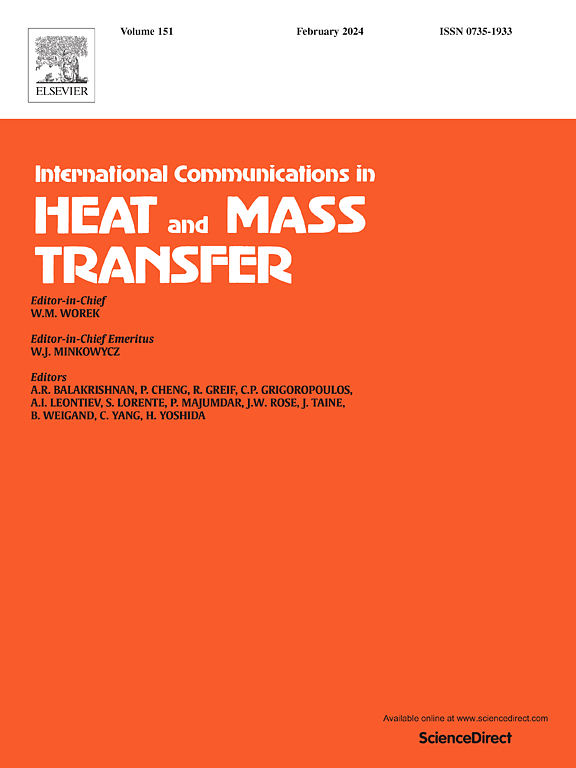Technical note: Extension of full-spectrum correlated k-distribution look-up tables to CH4 and NH3 for use in combustion modelling
IF 6.4
2区 工程技术
Q1 MECHANICS
International Communications in Heat and Mass Transfer
Pub Date : 2025-02-19
DOI:10.1016/j.icheatmasstransfer.2025.108752
引用次数: 0
Abstract
Due to reliable accuracy and computational efficiency, full-spectrum correlated k-distribution (FSCK) look-up tables (short for traditional FSCK tables) have continuously gained popularities; however, they are only valid for combustion products and intermediates, such as CO2, H2O, CO and soot. Gas fuels, i.e., CH4, NH3 or their mixture, also display complex spectral or ‘nongray’ behaviors across spectrum. While those gas fuels are commonly consumed during combustion, their spectral behaviors may affect ignition, flame spread and chemical reactions. Therefore, it is necessary to include spectral properties of both CH4 and NH3 into FSCK look-up tables. To achieve this, a separate FSCK look-up tables (short for extended FSCK tables) including only CH4 and NH3 is constructed in this work. The multiplicative mixing scheme is then used to mix k-distributions from traditional FSCK tables and those from extended FSCK tables. A realistic non-premixed flame is used to validate both efficiency and accuracy of extended FSCK tables as well as multiplicative mixing scheme. Results show that absorption from CH4 and NH3 during combustion is strong and cannot be ignored. Results also show that treating spectral properties of CH4 and NH3 to be gray may bring in significant errors.
求助全文
约1分钟内获得全文
求助全文
来源期刊
CiteScore
11.00
自引率
10.00%
发文量
648
审稿时长
32 days
期刊介绍:
International Communications in Heat and Mass Transfer serves as a world forum for the rapid dissemination of new ideas, new measurement techniques, preliminary findings of ongoing investigations, discussions, and criticisms in the field of heat and mass transfer. Two types of manuscript will be considered for publication: communications (short reports of new work or discussions of work which has already been published) and summaries (abstracts of reports, theses or manuscripts which are too long for publication in full). Together with its companion publication, International Journal of Heat and Mass Transfer, with which it shares the same Board of Editors, this journal is read by research workers and engineers throughout the world.

 求助内容:
求助内容: 应助结果提醒方式:
应助结果提醒方式:


